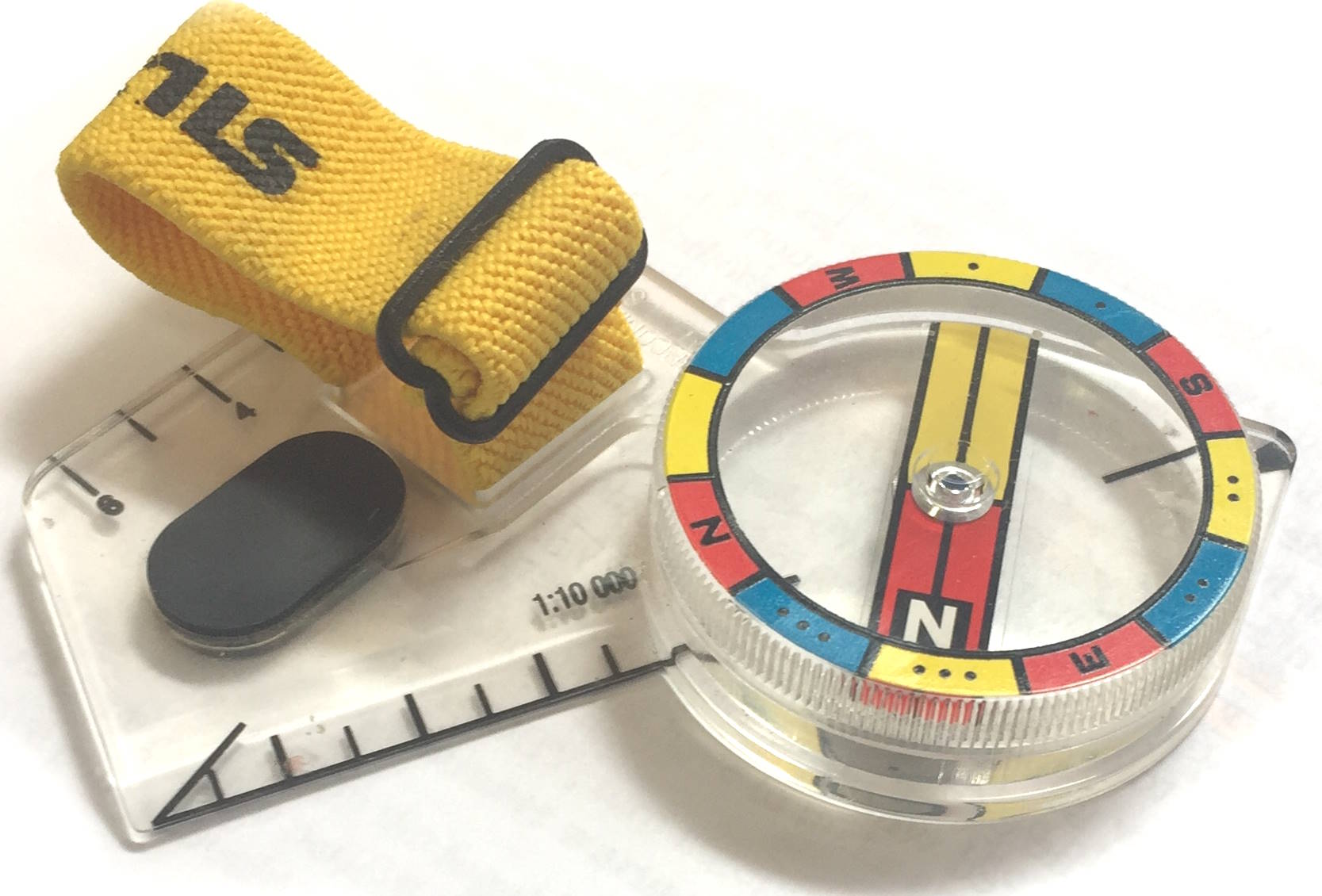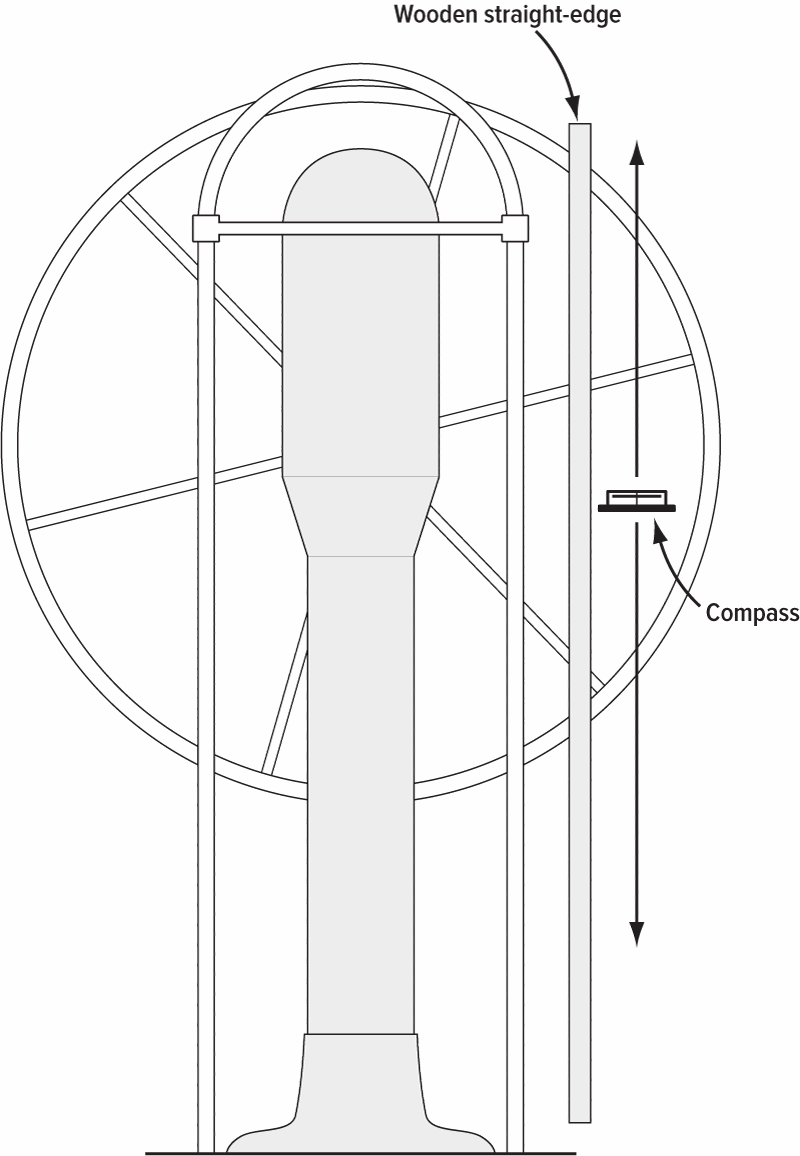10. How To Check for Magnetic Interference
The autopilot heading sensor is built into the control box so the control box mounting area must be free from magnetic influences. The helm area of most boats will be free of magnetic fields, but this should be checked. Use a hand-held compass, preferably a needle-bearing compass, to check for magnetic fields near your pedestal. (Using magnets to see if they stick to something magnetic is not a suitable test for this purpose.) Stereo speakers, dive knives, and winch handles should not be located near the control box, as well as high current cables, radar or LCD screens and electronic devices such as phones and tablets. Stainless fittings that are not 316 stainless or have welds can be magnetic. Pedestal guardrails made from dodger/bimini fittings are often magnetic.
Note
There is a short video on our website that demonstrates how to check for magnetic interference.

A handheld compass that uses a needle (a simple hiking compass) is usually more accurate and easier to use than one that uses a floating card. A marine handheld compass with a floating card is harder to read in this situation and not recommended. A cell phone compass app may be used, and the rectangular phone shape can make it easier to hold the phone square but there are some limitations:
If the phone has been exposed to strong magnetic fields the compass will not read accurately due to magnetized metal inside the phone.
The phone compass may not be sensitive enough to show changes of less than 3°

With your boat parallel to the dock, stand on the dock and check the dock’s heading and the boat’s heading with the magnetic compass. Step on the boat, hold the compass 3’ above or away from the pedestal and take a reading. The two headings should be very similar. Keeping the compass oriented, approach the pedestal area and watch the needle to notice any deflection from magnetic fields. Next place a yardstick or a firm wooden straight-edge against the pedestal guardrail and rest it firmly on the deck. Hold the straight-edge steady, so it does not twist. While holding the compass firmly against the straight-edge to keep the compass from rotating at all, slowly slide it up and down the straight edge and notice the amount of needle movement or deflection. The needle must not be pulled or deflected more than 5° near the mounting area.
You may notice some needle deflection as you pass the area just next to the ship’s compass (there are compensating magnets in the case) and near the engine control levers. There is usually no needle deflection 6-10ʺ below this area or 3ʺ-4ʺ above the ship’s compass card. If the needle deflects more than 5° a more suitable location will need to be found for the control box.
Some boats may have steel parts that have become magnetized over the years. Magnetism can come from steel in engine control cables and pins, steering cable fittings, any stainless bolts or dodger fittings that are not grade 316 stainless, homemade guardrails, and fasteners used for pedestal tables. Welded joints or parts may also be magnetic. On a few boats, the boat’s engine is located just inches under the pedestal which may cause a problem. Steel boats should do a careful magnetic survey and have a mounting location at least 6 ft from the nearest steel.
If a suitable location is not available for the control box, use of the CPT is not recommended.